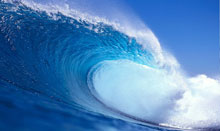ESSO - Indian National Centre for Ocean Information Services
(An Autonomous Body under the Ministry of Earth Sciences, Govt. of India)
Ocean Mixing and Monsoon (OMM)
To enhance the knowledge on air-sea interaction; horizontal and vertical mixing in the upper ocean over different temporal and spatial scales in the Bay of Bengal by increasing the observation platforms and thereby improving the parameterization schemes in the model, a joint research program are conducted between India and USA Institutions. The Indian participating institutes are lead in the name of "Ocean Mixing and Monsoon (OMM)" funded by National Monsoon Mission, Ministry of Earth Science (MoES), Government of India. OMM programme intended to measure unprecedented sub-mesoscale to basin-scale (along a 1000 km section, with about 1 km lateral resolution) surveys in the upper ocean and atmospheric boundary layer in different seasons and contrasting regimes using newly available sophisticated in-situ observation instruments, such as underway CTD (UCTD), wire walker (WW), gliders, lagrangian floats, chi-pod, bow chain and glider, along with satellite measurements to improve our knowledge on sub-mesoscale process.
OMM also has an international component with partners from various institutions under the umbrella of "The Air-Sea Interactions in the Northern Indian Ocean Regional Initiative (ASIRI)" with same objectives. During this period (2013-2017), both programs (OMM-ASIRI) together has conducted many meetings, workshops and seminars which helped to gain knowledge on new observation platforms and techniques for early career scientist and students. Both Indian and US vessels jointly surveyed the Bay of Bengal to map the large-scale surface fresh water distribution, and on identifying and characterising sharp lateral salinity and density gradients (sub-mesoscale fronts) and gathered statistics at one long-lived front, which was mapped repeatedly.
This kind of motivating and coordinated programs brought an international team of scientists together to better understand the Bay of Bengal's processes and role in air-sea interaction and its circulation and transport. Some of the new findings from this endeavour has been presented in Oceanography Issue (2016).
Main Science Issues/Questions:
- Pathways, persistence, balance of freshwater
- Physics of thin, fresh upper layer, lateral salinity gradients (fronts)
- Key processes of upper ocean stratification/mixing and balances
- Consequences of shallow, fresh upper layer and deep, warm subsurface layer for air-sea coupling
- Causes of unique near-surface air-sea gradients
- Surface flux algorithms/parameterization
- Air sea fluxes and coupling diurnal to intraseasonal scales





